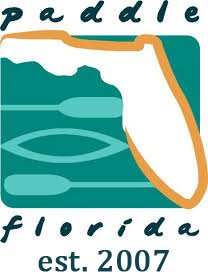Florida Springs Council Public Records Request
Florida politicians love to brag about how much money they have spent “restoring and protecting” Florida’s springs, but we haven't seen actual results to back that up.
We were curious how things were going so we went to DEP’s Statewide Annual Report on water quality projects. Our curiosity led to a public records request, a partnership with scientists, and some not-so-shocking conclusions. Here's what we found out.
BMAPs
Background
Basin Management Action Plans, or BMAPs, are the only regulatory tool the state has to restore springs. The 2016 Springs & Aquifer Protection Act tasked the Florida Department of Environmental Protection (DEP) to write BMAPs for impaired Outstanding Florida Springs. DEP first proposed BMAPs for most springs in 2018. The goal of each springs BMAP is to restore polluted springs' water quality within 20 years.
We had questions
DEP's report couldn't answer them
As the five-year deadline to reach a 30% reduction in nitrates approaches for these BMAPs, we were curious how things were going. So we went to DEP’s 2022 Statewide Annual Report on water quality projects.
While DEP reported on the number of projects funded and the amount of money spent, there is no actual springs water quality data in the water quality report. What we DID find was concerning. BMAP projects were only removing one pound of nitrogen per year for every $2,100 spent. So we decided to dig deeper.
FSC submitted a public records request for all of DEP’s Outstanding Florida Springs nitrogen concentration data since 2018 and hired the scientists at the Florida Springs Institute (FSI) to analyze it.
What we found
Springs Nitrate levels are still increasing.
FSI looked at water quality data for 26 Outstanding Florida Springs. Nitrogen levels in 17 of the 26 springs have increased since the BMAPs were first adopted, with an average increase across all springs analyzed of about 20%.
Nitrogen levels in seven of the springs significantly changed (p < .05) between 2018 and 2022. Six of these springs significantly increased (Fanning, Homosassa, Jackson Blue, Madison Blue, Peacock, and Poe), while Wekiva Springs significantly decreased.
Overall, since 2018, nitrate concentrations in these springs have increased from about 2.3 to 3.4 mg/L, an average increase of 48%.
What It Means
Three takeaways
These results are not surprising. FSC has been saying the BMAPs were designed to fail since they were originally proposed. But, here's what this report tells us.
1 - Under Florida law, BMAPs must achieve springs water quality goals within 20 years. If, as this analysis suggests, many springs are worse off today than when the BMAPs were adopted, our Legislature will need to move aggressively to strengthen existing laws and rules and increase springs restoration funding.
2 - Agriculture is the major pollution source in five of the six Outstanding Florida Springs that have significantly increased in nitrogen pollution since 2018. Floridians must oppose laws and rules that increase agricultural pollution (like fertilizer rate tailoring) and advocate for new funding and programs to help farmers reduce their impact on Florida springs.
3 - Money spent and number of projects undertaken do not equal results. Florida politicians love to brag about how much money they have spent “restoring and protecting” Florida’s springs, but never talk about the results. DEP's report included only projects undertaken, but no actual water quality data. These findings help explain why. Spending hundreds of millions of dollars of taxpayer money while our springs become more polluted is nothing to be proud of.
Keep our good work for the springs going.
As many of you know, we are waiting on a ruling from the 1st District Court of Appeals regarding the validity of five springs BMAPs. At the heart of our argument is that the plans are not strong enough to achieve water quality goals. This initial analysis shows that our concerns are warranted and that our state must take aggressive action now to address springs pollution.
The Florida Springs Council gives a voice to Florida’s waters in the Capitol and the courthouse. Please support our work by becoming a Sustaining Member with an automated monthly donation.
Best,
Ryan Smart
Florida Springs Council
smart@floridaspringscouncil.org
